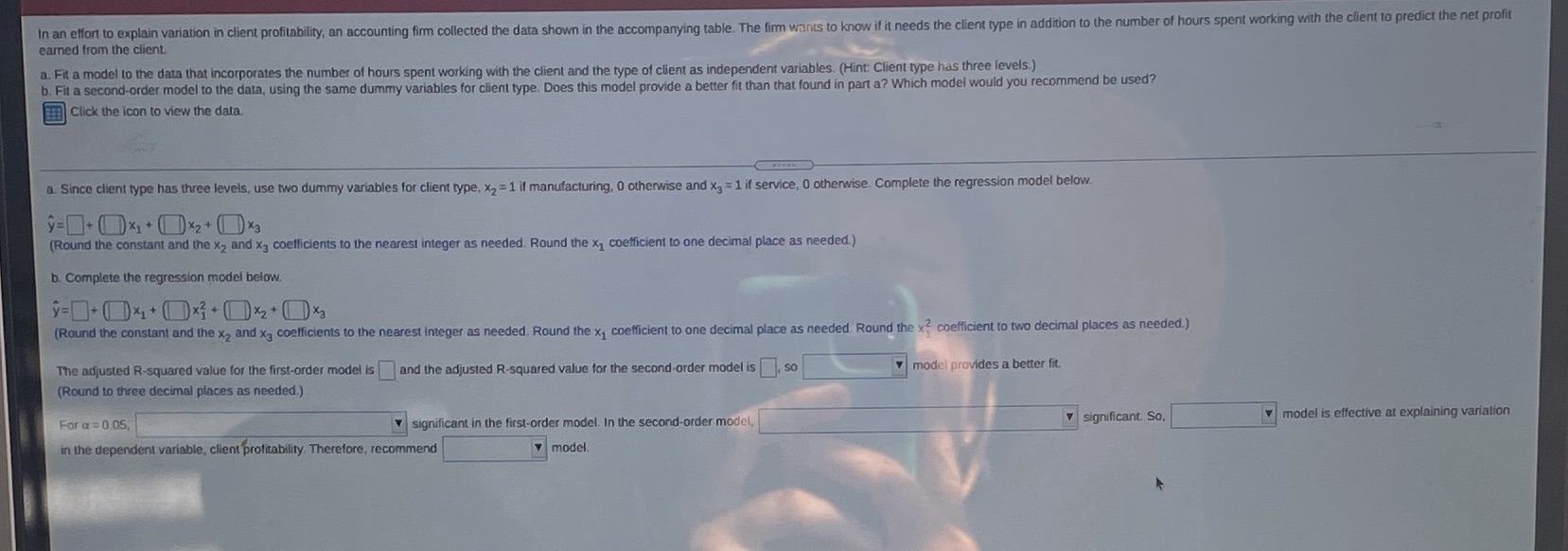Answered step by step
Verified Expert Solution
Question
1 Approved Answer
Y=net profit earned from the client X1=number of hours spent working with the client X2= type of client (1 manufacturing, 2 service, 3 governmental) Y2343410027812081402600-750345124741973201X14753255526253147452632X212322331123
Y=net profit earned from the client X1=number of hours spent working with the client X2= type of client (1 manufacturing, 2 service, 3 governmental) Y2343410027812081402600-750345124741973201X14753255526253147452632X212322331123

Step by Step Solution
There are 3 Steps involved in it
Step: 1

Get Instant Access to Expert-Tailored Solutions
See step-by-step solutions with expert insights and AI powered tools for academic success
Step: 2

Step: 3

Ace Your Homework with AI
Get the answers you need in no time with our AI-driven, step-by-step assistance
Get Started


